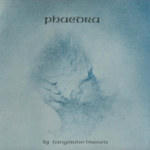 Tangerine Dream’s “Phaedra,” released in 1974, is a groundbreaking and influential album that solidified the band’s status as pioneers of electronic and ambient music. With its innovative use of synthesizers, atmospheric soundscapes, and minimalist compositions, “Phaedra” remains a landmark release in the genre.
Tangerine Dream’s “Phaedra,” released in 1974, is a groundbreaking and influential album that solidified the band’s status as pioneers of electronic and ambient music. With its innovative use of synthesizers, atmospheric soundscapes, and minimalist compositions, “Phaedra” remains a landmark release in the genre.
The album begins with the title track, “Phaedra,” a mesmerizing and expansive piece that sets the tone for the entire album. Clocking in at over 17 minutes, the track takes the listener on a journey through ethereal textures, pulsating rhythms, and haunting melodies. The layered synthesizers create a rich tapestry of sound, immersing the listener in an otherworldly sonic landscape.
Another standout track is “Mysterious Semblance at the Strand of Nightmares,” a mesmerizing and atmospheric composition. The track gradually builds tension with its pulsating rhythms and swirling synthesizer layers, creating a sense of mystery and anticipation. The subtle shifts in dynamics and the intricate interplay of sounds showcase Tangerine Dream’s ability to create immersive and captivating musical experiences.
The album also features “Sequent C,” a hypnotic and trance-inducing piece that showcases Tangerine Dream’s mastery of repetitive patterns and hypnotic rhythms. The track’s minimalist approach and the subtle variations in the synthesizer motifs create a sense of hypnotic allure, drawing the listener deeper into the music.
One of the defining qualities of “Phaedra” is its use of space and texture. The album is characterized by its ethereal and dreamlike soundscapes, with the synthesizers creating a sense of vastness and openness. Tangerine Dream’s careful attention to sound design and their ability to sculpt sonic landscapes make the album a truly immersive and captivating listening experience.
“Phaedra” also showcases Tangerine Dream’s experimental approach to music-making. The album incorporates elements of improvisation and spontaneous composition, with the band members exploring the sonic possibilities of their synthesizers in real-time. This sense of exploration and spontaneity adds an extra layer of excitement and unpredictability to the music.
The impact of “Phaedra” on the electronic music genre cannot be overstated. The album’s innovative use of synthesizers, its atmospheric soundscapes, and its minimalist compositions paved the way for future generations of electronic musicians. Its influence can be heard in various genres, ranging from ambient and electronic to progressive and even mainstream pop music.
In conclusion, Tangerine Dream’s “Phaedra” is a groundbreaking album that showcases the band’s pioneering approach to electronic and ambient music. With its ethereal soundscapes, mesmerizing compositions, and innovative use of synthesizers, the album remains a timeless and influential work in the realm of electronic music. “Phaedra” is a testament to Tangerine Dream’s artistic vision and their ability to create music that pushes boundaries and transports the listener to new sonic realms.
This post has already been read 324 times!

























